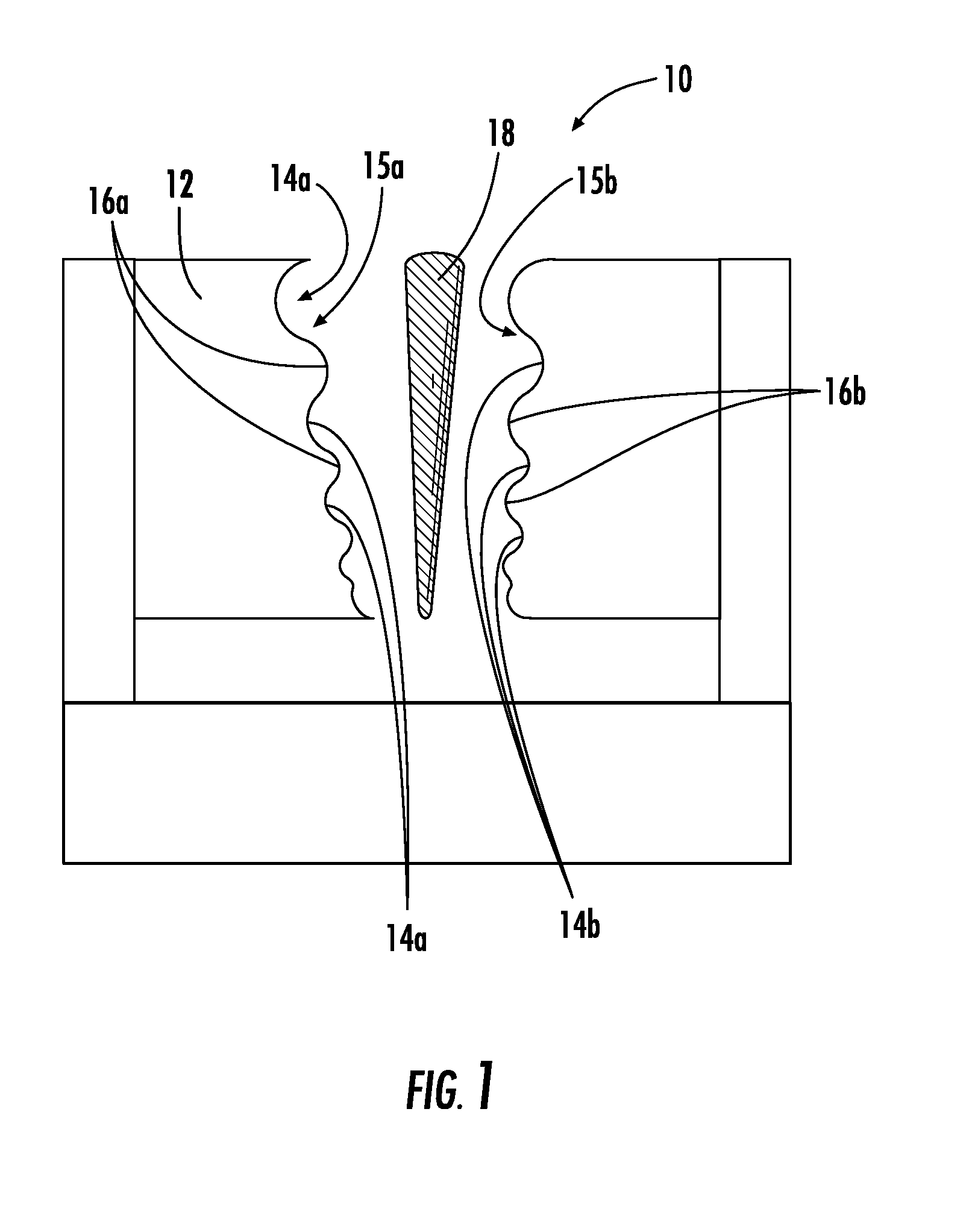Endodontic instrument and method of manufacturing
a technology of endodontic instruments and manufacturing methods, applied in the field of dental surgery, can solve the problems of small diameter, difficult to gain access to the full length of the canal for adequate therapy, and difficulty in achieving the effect of adequate therapy, so as to improve the efficacy reduce the number of instruments needed, and improve the effect of endodontic root canal filling/therapy procedur
- Summary
- Abstract
- Description
- Claims
- Application Information
AI Technical Summary
Benefits of technology
Problems solved by technology
Method used
Image
Examples
Embodiment Construction
[0032]An embodiment of the invention described herein includes a method for forming endodontic files by treating an elongate rod formed from a generally predetermined length of superelastic material by the substantially simultaneous application of appropriate heat and stress. In one embodiment, the rod 18 prior to treatment is tapered, substantially cylindrical, and fluteless. Alternatively, the rod may be nontapered and / or the rod may have various shapes, such as having a cross section that is triangular, rectangular, hexagonal, star-shaped, frusto-cylindrical, asymmetrical polygonal, diamond, or other various shaped cross-sections. In other embodiments, the rod may be fluted, such as having the helical shape of traditional endodontic instruments.
[0033]The rod 18 is also preferably formed from a nickel titanium alloy, such as SE508 nickel-titanium wire manufactured by Nitinol Devices and Components, Inc. of Fremont, California. This is a typical binary nickel-titanium alloy used fo...
PUM
| Property | Measurement | Unit |
|---|---|---|
| temperature | aaaaa | aaaaa |
| temperature | aaaaa | aaaaa |
| temperatures | aaaaa | aaaaa |
Abstract
Description
Claims
Application Information
 Login to View More
Login to View More - R&D
- Intellectual Property
- Life Sciences
- Materials
- Tech Scout
- Unparalleled Data Quality
- Higher Quality Content
- 60% Fewer Hallucinations
Browse by: Latest US Patents, China's latest patents, Technical Efficacy Thesaurus, Application Domain, Technology Topic, Popular Technical Reports.
© 2025 PatSnap. All rights reserved.Legal|Privacy policy|Modern Slavery Act Transparency Statement|Sitemap|About US| Contact US: help@patsnap.com



